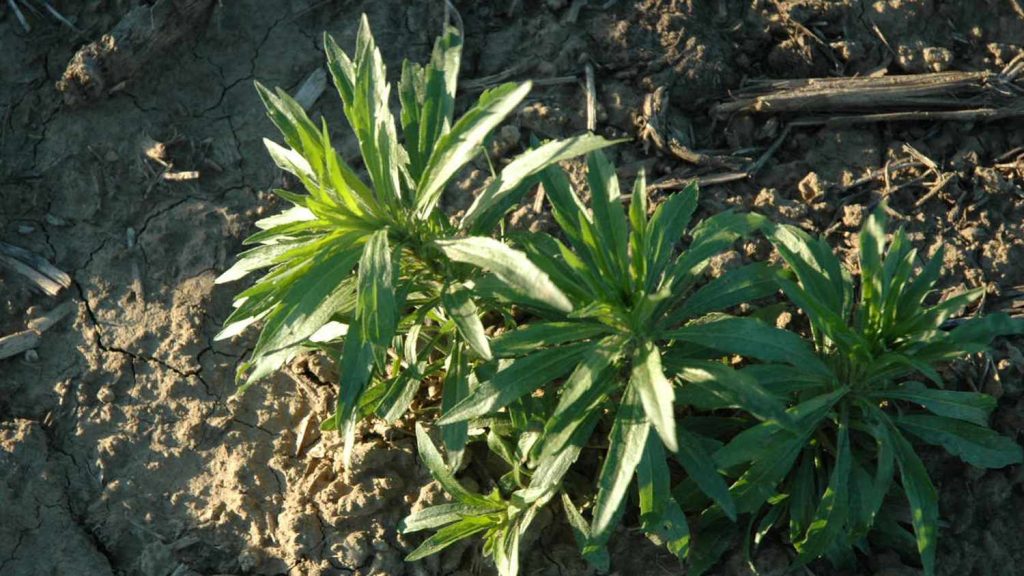Looking to control marestail? It is one of the more challenging weeds to control prior to no-tilling soybeans.
Aaron Hager, University of Illinois Extension weed specialist, said some farmers have reported poor marestail control following applications of glyphosate plus 2,4-D.
Poor control can be caused by several factors, including large plant size and resistance to glyphosate. If a marestail population is resistant to glyphosate, a pint of 2,4-D in the spring is generally inconsistent/ineffective when it’s the only product in a tankmix active on the resistant population.
Chemical Control Options
Adding Sharpen or metribuzin to glyphosate plus 2,4-D can improve marestail control, Hager said. Include MSO (methylated seed oil) with Sharpen and be sure to adhere to planting intervals in treated fields where another soil-applied PPO inhibitor will be used.
Glufosinate (Liberty, Interline, etc.) or Gramoxone SL are other options to control marestail before planting. Control is often improved when these products are tankmixed with metribuzin and 2,4-D. Be sure to adjust application parameters such as nozzles and spray volume, as both glufosinate and Gramoxone are contact herbicides. This helps ensure thorough spray coverage.
Seed Varieties
Enlist and Xtend technologies can be effective tools for controlling marestail. If using dicamba or 2,4-D as a burndown herbicide in these varieties, be sure to follow the herbicide label for any intervals between application and planting.
“For example, if someone applied Clarity (dicamba) as a burndown before Xtend soybean, they would need to accumulate one inch of precipitation followed by 14-28 days (depending on application rate) before planting soybean,” Hager explained.
Tillage
Tillage is another option to control emerged marestail. Delay tillage until field conditions are suitable, and be sure to till deep enough to completely uproot all existing vegetation.

